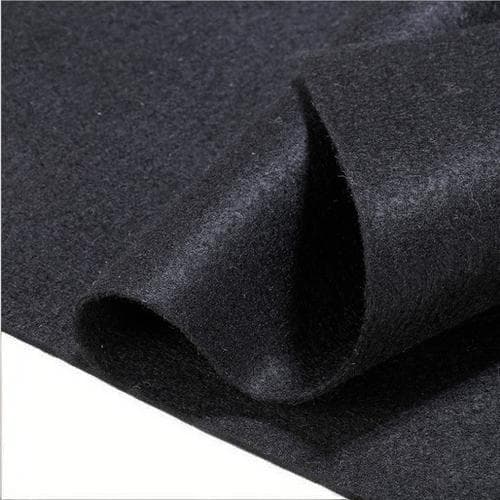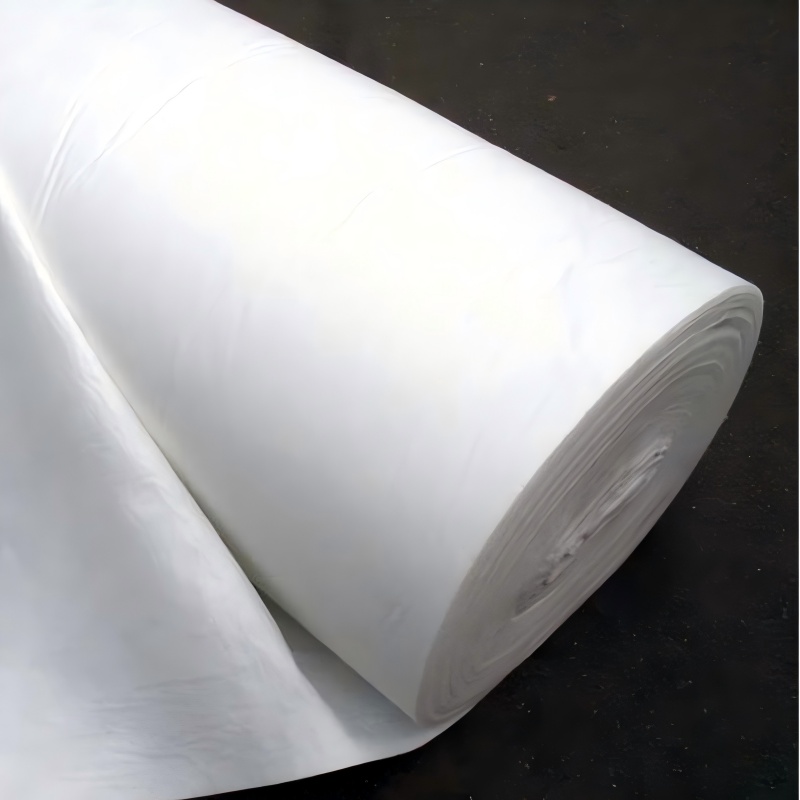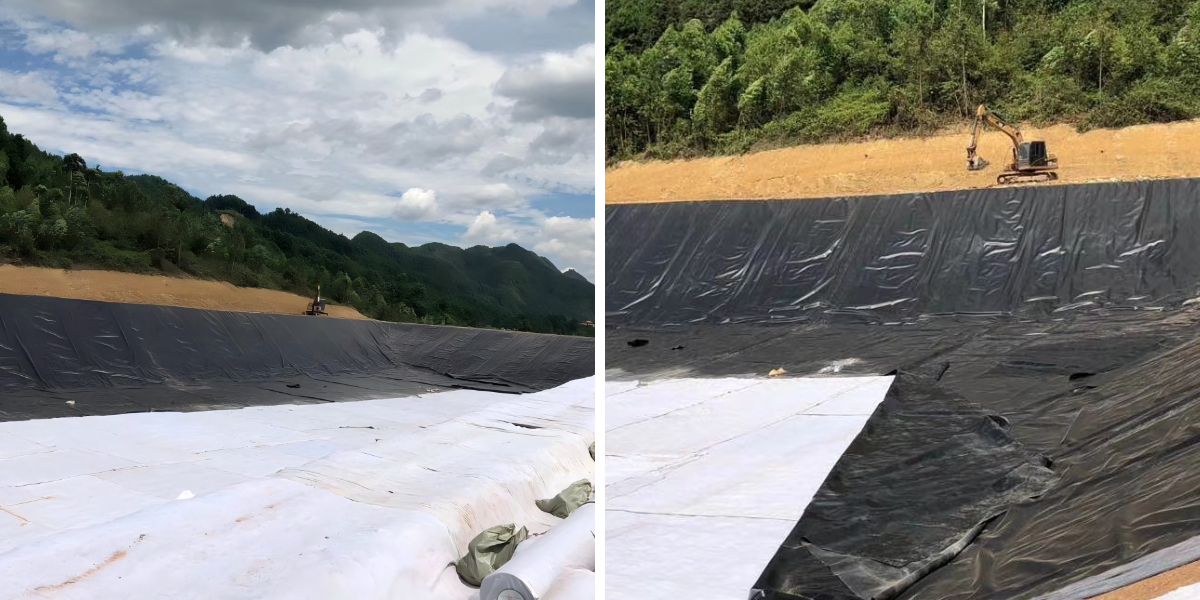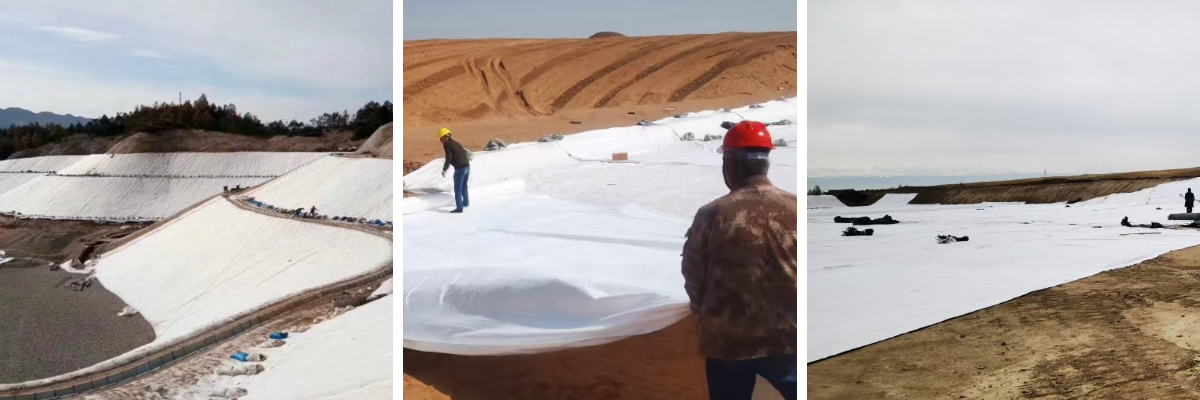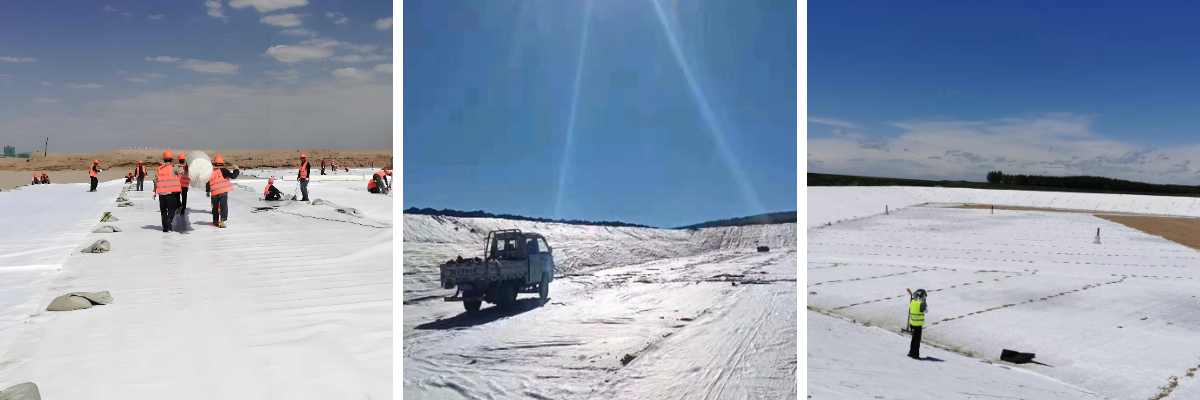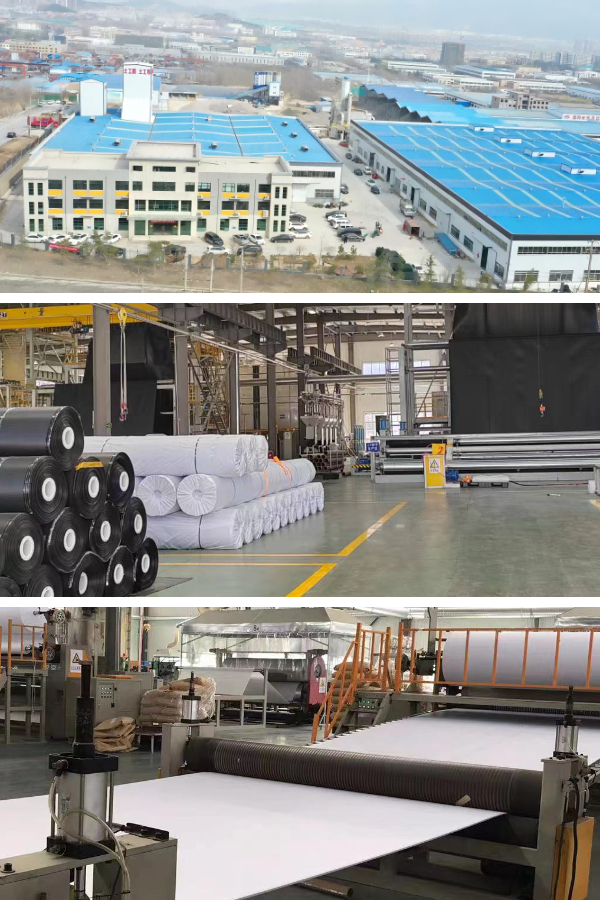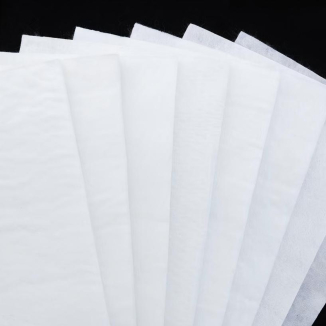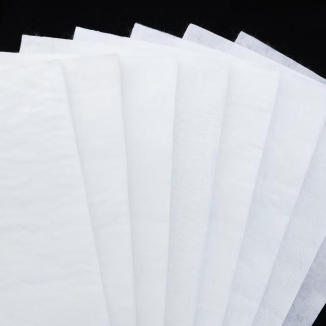Geotech Textiles
1. Collaborative filtration and drainage: efficiently diverting accumulated water while intercepting fine soil, preventing blockages and ensuring long-term smooth operation of the system
2. Flexible adaptation: conforms to complex terrain without blind spots, suitable for narrow and irregular construction scenarios
3. Weather resistant and corrosion-resistant: resistant to UV rays, acid and alkali erosion, stable performance in extreme environments, and long service life
4. Economic efficiency: Lightweight, easy to lay, labor-saving, low material cost, and compatible with multiple engineering processes
Products Introduction:
Geotech Textiles is a general term for functional geosynthetic materials made from high molecular weight polymers such as polypropylene, polyester, and polyethylene through weaving, non-woven (needle punched, heat bonded), composite, and other processes. It is a "multifunctional structural optimization material" in the field of civil engineering. Its core value lies in integrating the five basic functions of "isolation, filtration, reinforcement, drainage, and protection", providing customized material solutions for different engineering scenarios, and solving common problems such as unstable soil structure, mixed engineering materials, water retention, and insufficient load bearing capacity.
Product Features:
1. Complete functional system, customized and adapted according to needs
Build a functional system of "five core functions+segmented scenario optimization": isolate functions to separate materials of different levels and prevent interlayer mixing; The filtering function intercepts fine particles to ensure smooth drainage; Strengthening function enhances the bearing capacity and shear strength of soil; The drainage function accelerates water diversion and avoids water accumulation; The protective function reduces external wear and environmental erosion. Different product categories focus on different functions, such as woven geotextiles being stronger than reinforced, and non-woven geotextiles being superior in filtering and drainage, which can be accurately selected according to engineering needs.
2. Excellent mechanical properties, stable and reliable load-bearing capacity
Using high modulus polymer raw materials and precision technology, the mechanical properties are highly controllable: the longitudinal and transverse fracture strength of woven geotextiles can reach 50-150kN/m, suitable for heavy-duty reinforcement scenarios; Non woven geotextile has a tear resistance strength of ≥ 3kN, meeting conventional protection requirements; The tensile yield strength of geogrid is ≥ 80kN/m, suitable for high slope reinforcement. At the same time, it has excellent resistance to creep and fatigue, and can maintain structural stability even under long-term loads, ensuring the long-term safety of the project.
3. Weather resistant, corrosion-resistant and broad-spectrum, with strong environmental adaptability
The raw materials have undergone anti UV, anti acid and alkali, and anti microbial degradation treatment, and can work stably in the extreme temperature range of -40 ℃ to 90 ℃. They are resistant to saline alkali soil, seawater immersion, industrial wastewater erosion, and outdoor strong sunlight aging. In complex environments such as coastal areas, mines, and chemical industries, the service life can reach 10-25 years (buried) or 3-10 years (exposed), significantly reducing the frequency and cost of later maintenance.
4. Flexible and diverse forms, convenient and efficient construction
Combining flexibility and plasticity, it can fit irregular terrain such as undulating surfaces, curved slopes, narrow ditches, etc., without blind spots for laying; The product has a variety of forms, including roll, sheet, mesh, etc. The length of a single roll can reach 50-200m, and the width can be selected from 1-8m, reducing the number of overlapping and splicing times. Construction does not require large heavy equipment, manual labor or small machinery to complete the laying, with an efficiency of 500-1200 square meters per day, suitable for different construction conditions.
5. Coordinated economic and environmental protection, with excellent value throughout the entire cycle
The material cost is only 1/5-1/2 of traditional rigid materials such as concrete and steel plates, and the construction labor cost is reduced by more than 30%; In long-term use, due to the improvement of engineering stability, the maintenance cycle is extended by 2-5 times, and the full cycle cost advantage is significant. At the same time, polymer raw materials can be recycled, and some products are made of recycled materials, which is in line with the concepts of green engineering and sustainable development, reducing environmental burden.
Product Parameters:
project | metric | ||||||||||
Nominal strength/(kN/m) | |||||||||||
6 | 9 | 12 | 18 | 24 | 30 | 36 | 48 | 54 | |||
1 | Longitudinal and transverse tensile strength / (kN/m) ≥ | 6 | 9 | 12 | 18 | 24 | 30 | 36 | 48 | 54 | |
2 | Maximum elongation at maximum load in longitudinal and transverse directions/% | 30~80 | |||||||||
3 | CBR top penetration strength /kN ≥ | 0.9 | 1.6 | 1.9 | 2.9 | 3.9 | 5.3 | 6.4 | 7.9 | 8.5 | |
4 | Longitudinal and transverse tearing strength /kN | 0.15 | 0.22 | 0.29 | 0.43 | 0.57 | 0.71 | 0.83 | 1.1 | 1.25 | |
5 | Equivalent aperture O.90(O95)/mm | 0.05~0.30 | |||||||||
6 | Vertical permeability coefficient/(cm/s) | K× (10-¹~10-), where K=1.0~9.9 | |||||||||
7 | Width deviation rate /% ≥ | -0.5 | |||||||||
8 | Unit area mass deviation rate /% ≥ | -5 | |||||||||
9 | Thickness deviation rate /% ≥ | -10 | |||||||||
10 | Thickness coefficient of variation (CV)/% ≤ | 10 | |||||||||
11 | Dynamic perforation | Puncture hole diameter/mm ≤ | 37 | 33 | 27 | 20 | 17 | 14 | 11 | 9 | 7 |
12 | Longitudinal and transverse fracture strength (grab method)/kN ≥ | 0.3 | 0.5 | 0.7 | 1.1 | 1.4 | 1.9 | 2.4 | 3 | 3.5 | |
13 | Ultraviolet resistance (Xenon arc lamp method) | Longitudinal and transverse strength retention rate% ≥ | 70 | ||||||||
14 | Ultraviolet resistance (fluorescence UV lamp method) | Longitudinal and transverse strength retention rate% ≥ | 80 | ||||||||
Product Applications:
1. Transportation infrastructure engineering
Highway/railway engineering: Woven geotextile is used for roadbed reinforcement to prevent settlement and deformation; Non woven geotextiles are used for roadbed drainage and slope filtration; Geogrid is used for soft soil subgrade treatment and is suitable for projects such as highways, heavy-duty railways, and rural roads.
Port/Airport Engineering: High strength woven geotextile is used for reinforcing the foundation of the yard, and geomembrane and geotextile are combined for anti-seepage of dams, suitable for scenarios such as port container yards and airport runway base treatment.
2. Water conservancy and slope protection engineering
River/reservoir engineering: Non woven geotextiles are used for anti filter drainage of dam slopes to prevent pipe surges and soil erosion; Geogrid is used for reinforcing dams, enhancing anti sliding stability, and adapting to the reinforcement of small and medium-sized reservoirs and flood control of rivers.
Slope and Mine Management: Geogrid and geotextile composite are used for reinforcing highway slopes and mine waste dumps, combined with spray seeding greening to achieve "reinforcement ecology" dual protection, preventing slope collapse and soil erosion.
3. Municipal and Construction Engineering
Municipal construction: Non woven geotextiles are used for drainage and isolation of municipal roads and square roadbeds, geomembranes are used for anti-seepage of underground pipe galleries, and are suitable for projects such as road renovation and new municipal squares in old urban areas.
Building foundation: Woven geotextile is used for reinforcing weak foundations, non-woven geotextile is used for basement moisture prevention and foundation pit drainage to prevent building settlement and wall mold, and is suitable for multi story buildings and underground garage construction.
4. Environmental Protection and Agricultural Engineering
Environmental engineering: The composite of geomembrane and geotextile is used for anti-seepage and leachate treatment in landfills, and non-woven geotextile is used for sludge dewatering in sewage treatment plants, suitable for environmental landfills and sewage treatment projects.
Agricultural water conservancy: Non woven geotextiles are used for anti-seepage and slope protection in agricultural irrigation channels, geogrids are used for terrace reinforcement, improving water resource utilization efficiency, and adapting to agricultural water conservancy renovation and water-saving irrigation projects.
Geotech Textiles, with its core advantages of "diversified integration of functions, customized performance according to demand, weather resistance, stability and reliability, and economic and environmental synergy", accurately solves the common pain points of "structural stability, material compatibility, moisture management, and cost control" in civil engineering, and is the "foundation protection and functional strengthening cornerstone" of modern engineering construction.
Compared with traditional engineering materials, geotextiles not only achieve the breakthrough of "replacing multiple traditional materials with a single material", but also promote the transformation of engineering construction towards "high efficiency, low cost, and green" through their lightweight and easy to construct characteristics. From heavy-duty reinforcement in transportation infrastructure to long-term anti-seepage in water conservancy projects, from ground stability in municipal construction to pollution isolation in environmental protection projects, geotextiles provide comprehensive basic support for various types of projects with flexible category forms and reliable performance, becoming one of the indispensable core materials in the civil engineering system.



